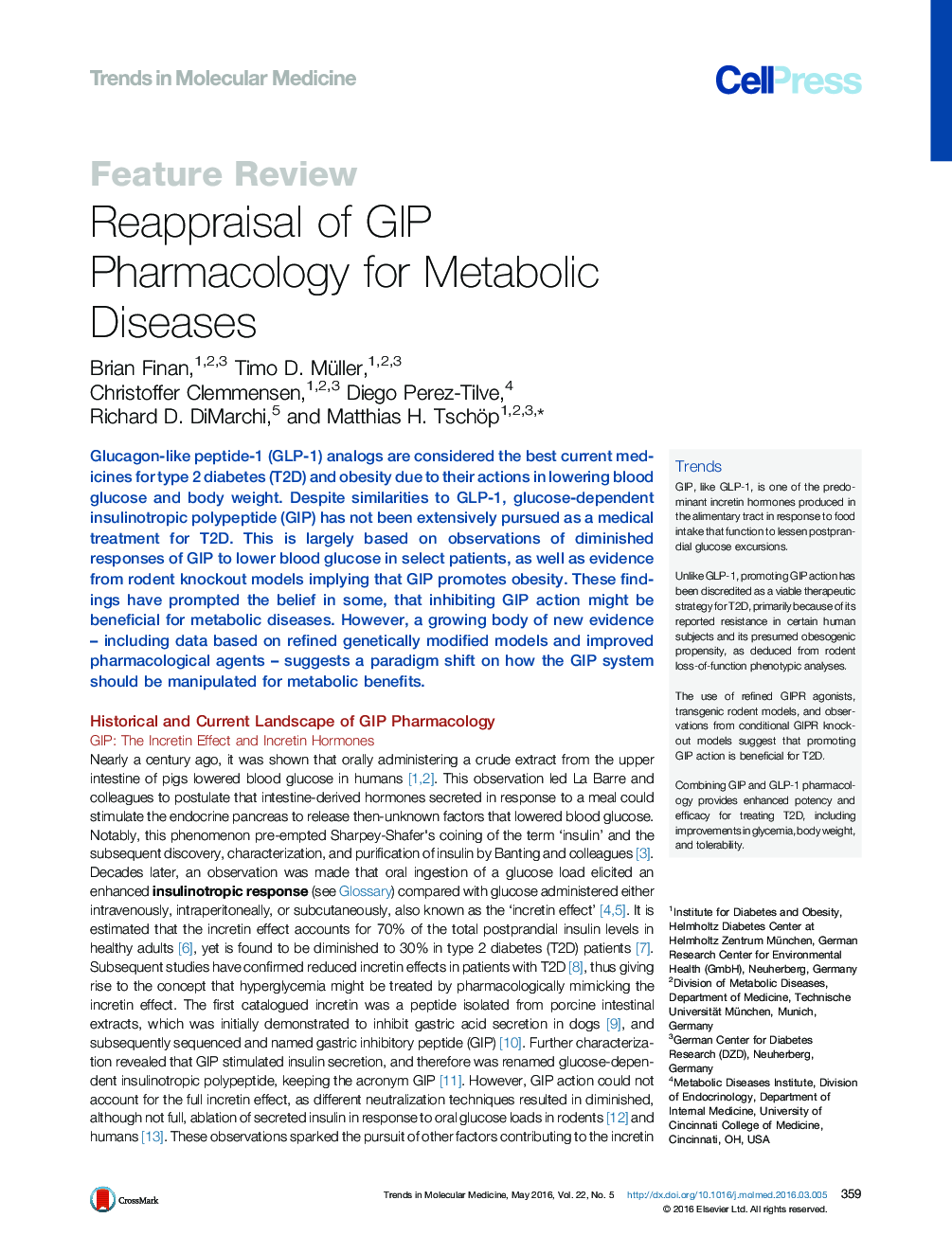| کد مقاله | کد نشریه | سال انتشار | مقاله انگلیسی | نسخه تمام متن |
|---|---|---|---|---|
| 2838360 | 1165004 | 2016 | 18 صفحه PDF | دانلود رایگان |

Glucagon-like peptide-1 (GLP-1) analogs are considered the best current medicines for type 2 diabetes (T2D) and obesity due to their actions in lowering blood glucose and body weight. Despite similarities to GLP-1, glucose-dependent insulinotropic polypeptide (GIP) has not been extensively pursued as a medical treatment for T2D. This is largely based on observations of diminished responses of GIP to lower blood glucose in select patients, as well as evidence from rodent knockout models implying that GIP promotes obesity. These findings have prompted the belief in some, that inhibiting GIP action might be beneficial for metabolic diseases. However, a growing body of new evidence – including data based on refined genetically modified models and improved pharmacological agents – suggests a paradigm shift on how the GIP system should be manipulated for metabolic benefits.
TrendsGIP, like GLP-1, is one of the predominant incretin hormones produced in the alimentary tract in response to food intake that function to lessen postprandial glucose excursions.Unlike GLP-1, promoting GIP action has been discredited as a viable therapeutic strategy for T2D, primarily because of its reported resistance in certain human subjects and its presumed obesogenic propensity, as deduced from rodent loss-of-function phenotypic analyses.The use of refined GIPR agonists, transgenic rodent models, and observations from conditional GIPR knockout models suggest that promoting GIP action is beneficial for T2D.Combining GIP and GLP-1 pharmacology provides enhanced potency and efficacy for treating T2D, including improvements in glycemia, body weight, and tolerability.
Journal: - Volume 22, Issue 5, May 2016, Pages 359–376